On the Juneau Icefield, Women Reimagine Who Does Science
A new generation of scientists reckons with the past, strives for an inclusive future
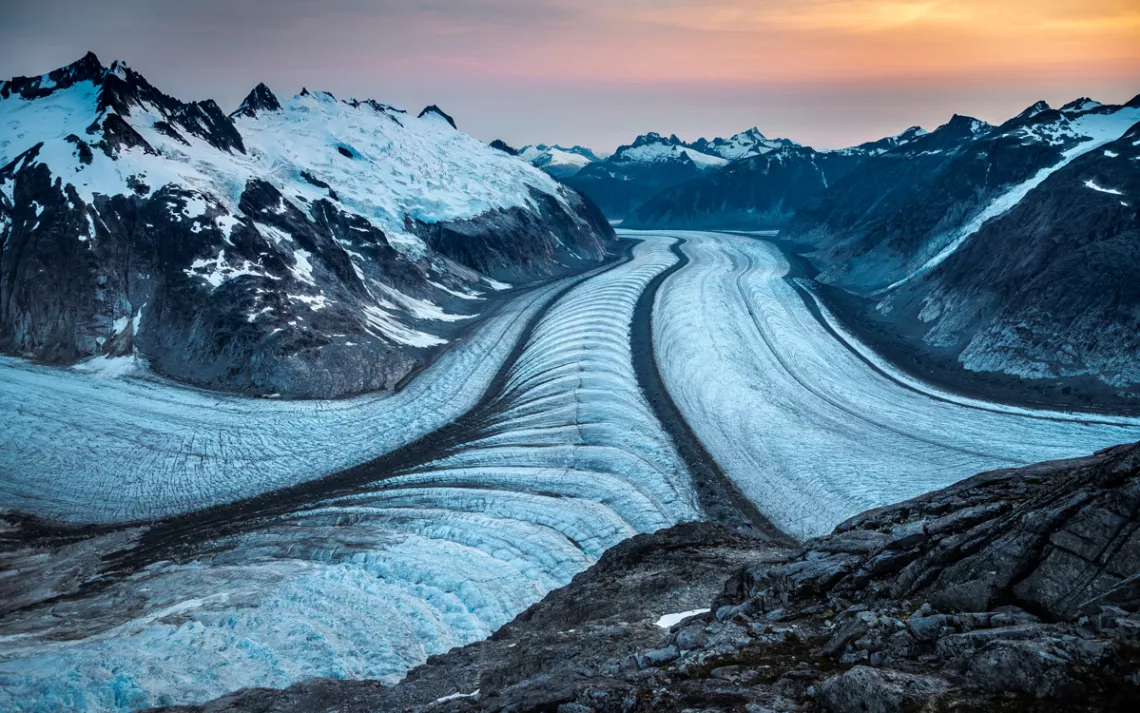
Photos courtesy of Andrew Opila
In June of 2016, Annie Boucher was hiking the Lemon Creek Trail with a group of students in Juneau, Alaska. The trail, which begins behind a Home Depot, meanders through the sodden brush of the Tongass National Forest, into treeless meadows and to the base of a glacier. It is not easy. With several miles and thousands of feet to climb, it could take the group 10 hours just to reach the snow, and two to three more to reach their final destination, a sheet-metal camp on a windy ridge high above the southeast Alaskan town.
Boucher had done the hike many times, first as a student herself in 2012, and for years now as staff with the Juneau Icefield Research Program (JIRP). Over six weeks each summer, undergraduate and graduate students, staff, and scientists ski 80 miles across one of the world’s largest nonpolar ice masses, staying at permanent camps while studying glacial systems, before exiting into Canada. The Lemon Creek Trail is the entry gate to the icefield. It is the first hurdle of the summer, and Boucher was ready to coach students through its mileage and sogginess.
What she wasn’t ready for: a student to inform her, mid-trail, that they would need gender-neutral sleeping arrangements.
She tucked away from the group, pulled out her cellphone, and dialed operations manager Newt Krumdieck.
“OK, so, this is totally new territory for JIRP. We have a student who is genderqueer, and we’re going to need gender-neutral housing,” Boucher told him. “And we’re going to be there in six hours. You can figure this out.”
Despite the limited infrastructure of the icefield camps, the program has offered gender-neutral sleeping options since. Boucher recounts the story to me at a coffee shop near the University of Maine, where she is a graduate student.
“Newt, bless his heart, probably had never heard the term 'genderqueer.'” she laughs. She attributes her own familiarity with the term only from having not-so-distantly been on a progressive campus, graduating from Carleton College with a B.A. in geology in 2011.
Boucher became JIRP’s program manager in 2018. Sitting beside her is the program’s executive director—also new this past field season—Seth Campbell, who is a research geophysicist at UMaine. The duo live five houses away from each other. From the way they talk, it’s evident they communicate daily, at all hours, to build, maintain, and garner funding for the program, which lives under the umbrella not-for-profit, The Foundation for Glacier and Environmental Research.
Central to their vision is increasing the inclusivity of the ice. “We want to run a science education program, and we want everyone to feel as comfortable as possible so they can fully participate in that program,” Boucher said.
JIRP is the second-longest-running glacier monitoring program in the world, second only to the Swedish research station Tarfala. Why study glaciers? Because they can tell us about past and present climates, geology and hydrology of natural systems; many human and biological communities downstream rely on their meltwater and nutrients, so understanding how they are changing in the face of climate change is critical. Academics and adventurers alike have been fascinated with them for centuries.
The Juneau Icefield Research Program harkens back to John Muir, who in 1890 was guided around Glacier Bay by seismologist Harry Fielding Reid. Muir collaborated with Reid to map the bay and study the glacier that bore his name, the Muir Glacier. (Reid would also get a glacier named after him.)
Twenty years later, a student and photographer named William O’Field read Reid’s reports in his college library. He traveled to Juneau in 1926, where Reid became his mentor. Through photography, mapping, and surveying, Field was the first scientist to truly monitor the termini of glaciers in southeast Alaska. In 1941, he wanted to finish mapping the lower inlet of the Muir glacier. So he adopted a field assistant, a Harvard student named Maynard Malcolm Miller, and together, he and Dr. Miller pondered a pivotal question: what determined the behavior of a glacier?
Up until this point, only their termini had been studied.
“It became fairly clear to us in 1941 that a full explanation was more likely to be found in the upper elevations rather than at the terminus,” wrote Dr. Miller and Field in the 1950 Geographical Review. In 1946, they climbed to what they called the “high ice”—the mass of accumulated snow that fed the glacial termini. In the summer of 1949, 24 people explored the icefield, and the annual expedition to the Juneau Icefield as we know it began.
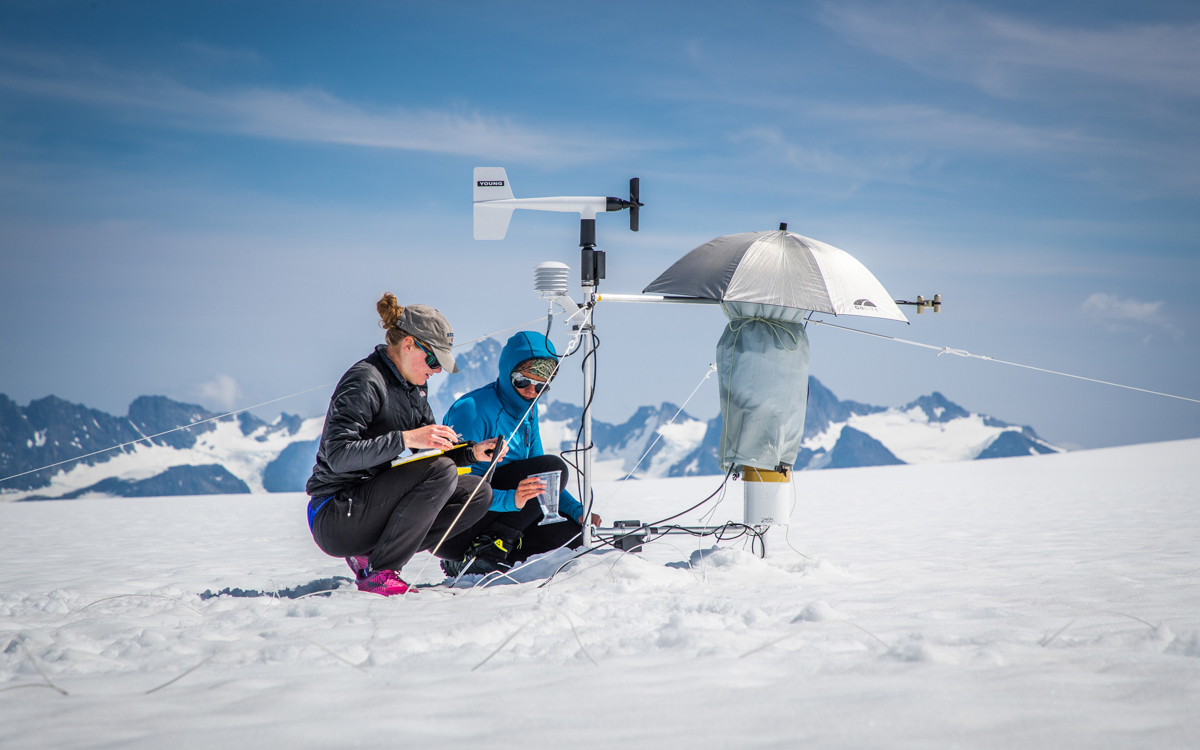
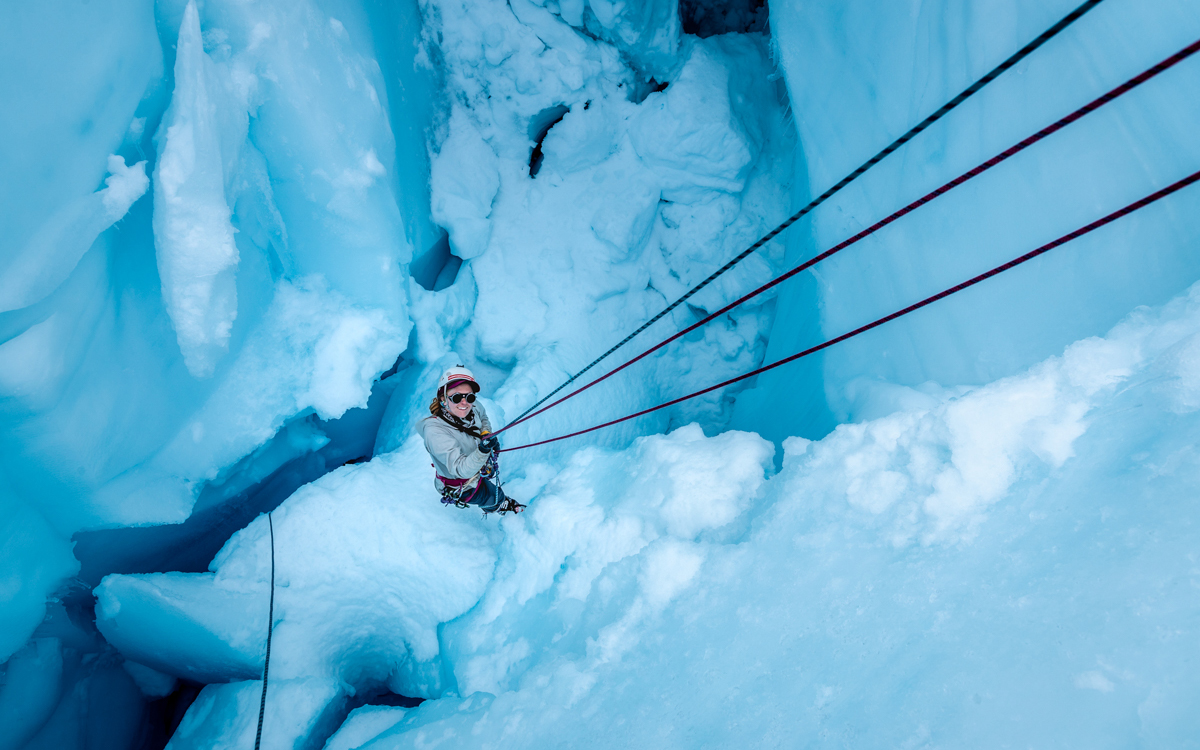
In the early years, as in most professional realms, it was only men. “It was a mountain-climbing, testosterone-driven endeavor,” said Dr. Carrie Jennings, a JIRP faculty member and Minnesota glacial geologist. Now in five of the past six years, female identifying participants outnumbered male, sometimes by three to one. In 2018, six of the eight field staff identified as female. With a handful of female faculty—Boucher in a key leadership role and another prominent woman, Annika Ord, as assistant operations manager—JIRP now feels uniquely populated by young women.
Field camps can be vulnerable spaces for female scientists. Isolated locations are difficult for home universities and funding institutions to monitor; there are not necessarily clear ground rules, codes of conduct, enforcement or consequences; and power hierarchies between supervisors and trainees create challenging dynamics. In a 2013 survey of over 600 field scientists, 71 percent of female respondents reported that they had been sexually harassed in the field, and 26 percent, sexually assaulted. Over 80 percent of respondents were trainees at the time of either incident.
Dr. Jennings was an adviser to Jane Willenbring, the 22-year-old Boston University graduate student who was repeatedly sexually harassed by geologist David Marchant in Antarctica. Among other inexcusable acts, Marchant used to throw rocks at Willenbring while she peed in the field. The U.S. Board of Geographic Names recently renamed the Antarctic glacier that was named after Marchant.
This kind of sexual abuse, discrimination, and harassment erodes women’s career advancement in STEM and is certainly a factor in the low numbers of women in science. Less than 30 percent of the world’s scientific researchers are women, according to the UNESCO Institute of Statistics. Women also publish fewer scientific papers and leave research positions at higher rates than men.
JIRP had an official code of conduct and pathway for reporting problems for the first time this summer. Campbell and Boucher attended webinars on the topic and culled from about 30 different existing codes to develop their own. Campbell, a research geophysicist at UMaine, looked to program directors in larger cryosphere playgrounds like Greenland and Antarctica for models.
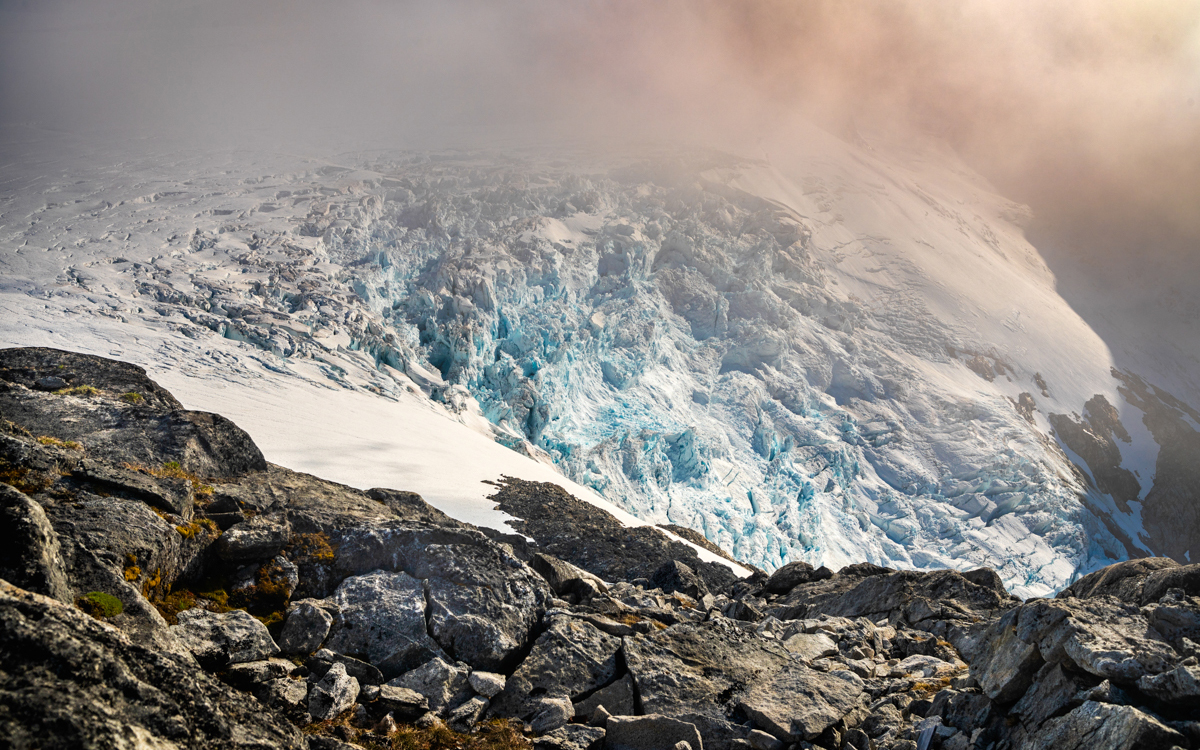
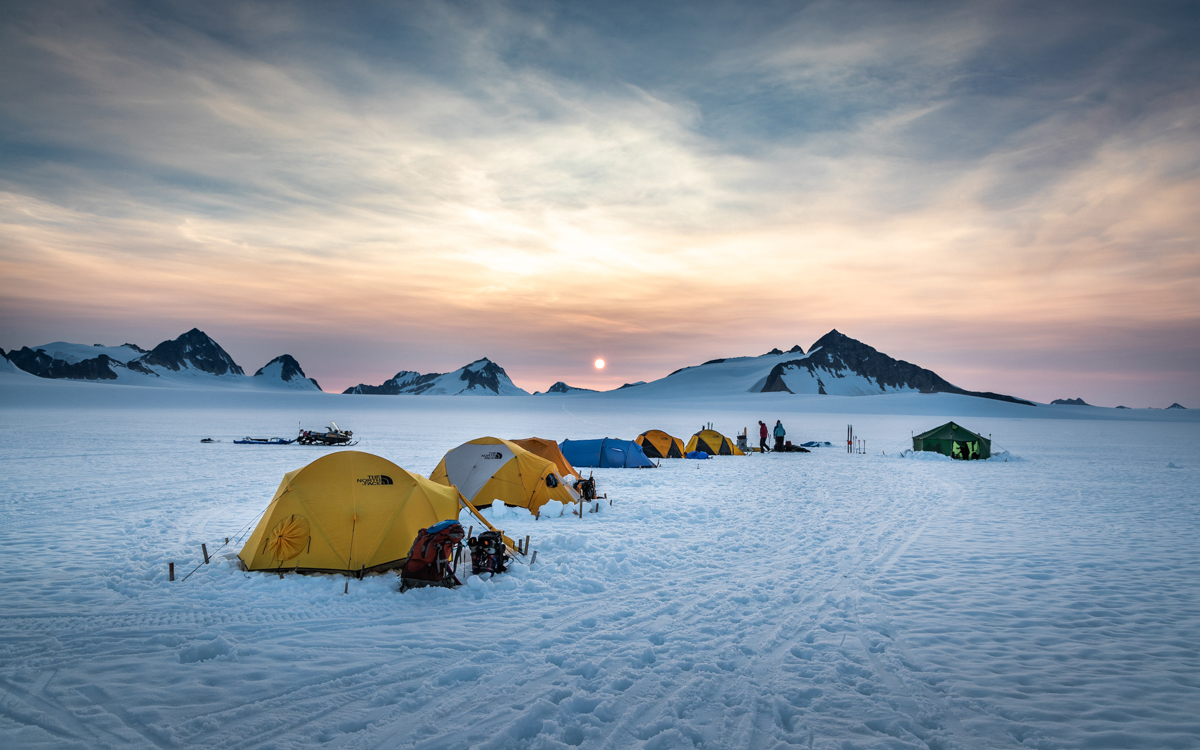
“We have an understanding of the history of JIRP. There have been some complaints in the past,” Campbell told me, referring to issues of sexual misconduct. “This is something we can fix, and tackle any issues that come up through the season head on, and be proactive about that. My goal and Annie’s goal is to knock it out of the park.”
Isabelle Henzmann, a master’s student at the University of Zurich and JIRP participant in 2018, said she felt completely safe on the icefield, despite being subject to the only openly known sexual harassment incident of the summer. While waiting in the food line one July afternoon, an older male made a comment that suggested he wanted to kiss her. Furious, she took the incident to staff and faculty.
“I was really surprised by how it was handled,” she said. “They took it really seriously.”
She was particularly surprised by the reaction of Bradley Markle, a paleoclimatologist and JIRP academic lead. “I’ve never seen Brad so angry before.”
Henzmann’s observation about Markle underscores the importance of male allies in this work. Boucher doesn’t want to sell short the efforts of the Newt Krumdiecks and Bradley Markles of the icefield, who are trying to fix a problem that, she reflects, “is partly invisible to them” by nature of their lived experience.
“As the seniormost woman in this program, I haven’t always had to take the lead on the sexual harassment conversation,” Boucher said. That’s made a world of difference for her. “I have never once felt at JIRP like there weren’t men who had my back.”
I first visited the icefield myself as a student in 2015. From the moment I stepped off the glacier, I itched to return and finally managed to in 2018, as field staff and science communication faculty. The icefield has a tendency to reel people back in like this. It certainly captured Dr. Miller, who directed the program until 2009, the better part of a century. There’s a breathlessness and brash aliveness to the landscape that is addictive. “Far from the deepest delvings of the dwarves,” reads a Tolkien quote scribbled in a camp outhouse—for there is graffiti everywhere in the camps—“the world is gnawed by nameless things.”
The icefall below that outhouse is a massive, cracked-up tongue that periodically booms as rock, ice, and dirt tumble into a 2000-foot trench below. The black mountains, the hulking crevasses, the inescapable wetness and winds of the storms, the brutality and crystal beauty of the sun as it radiates off the snow feel far away from modern life, deep, and otherworldly. In poor weather, which is frequent, the environment is singularly white and cold. In good, it erupts in inspiring views, bold blues, and heat that requires obsessive sunscreen application.
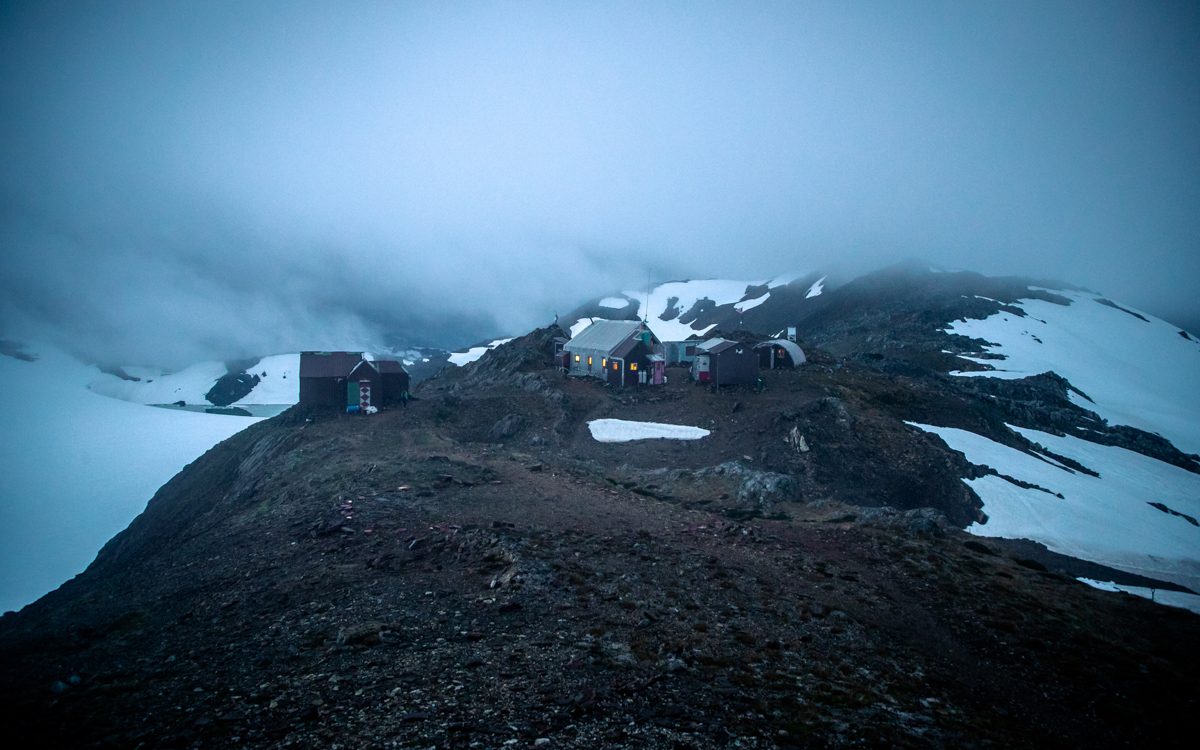
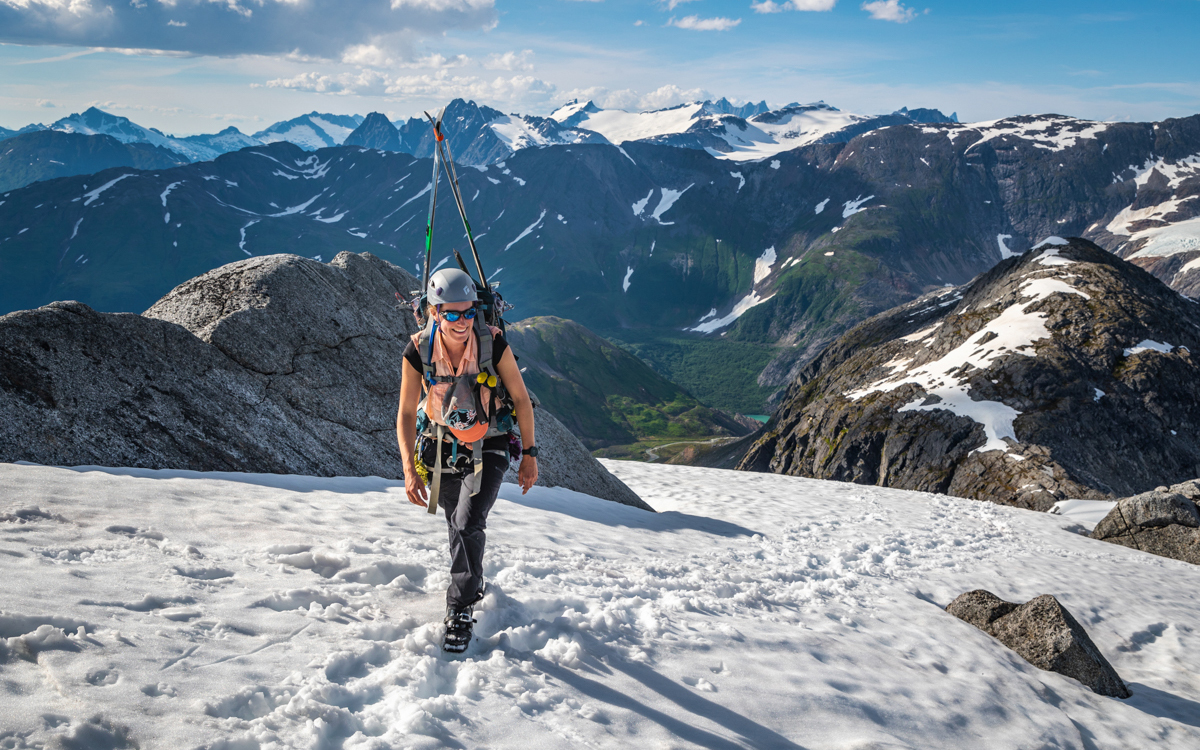
For non-Alaskans, glaciers are animals usually seen only in photography. Perhaps the best way to imagine an icefield is like an ocean. The vastness, aloneness, and mystery are the same; the water is just in a different phase. JIRP’s half dozen sheet-metal camps perch on islands of rock in a sea of moving ice, and JIRPers traverse glaciers like small boats sailing across a watery wilderness. The analogy feels especially fitting given that Dr. Miller served in the U.S. Navy during World War II, only years before he explored the icefield with Field.
This background bled into Miller’s style. He even built portholes into some of the JIRP buildings. “He was a bit militaristic,” said Dr. Matt Beedle, a glaciologist at the University of Northern British Columbia, who was a high schooler on JIRP in 1996 and is now on the board of directors.
“We had all these rules, and in some ways, that was good. It helped the JIRP ship run well back in those days and the whole crew to stay in line. In a way, he was kind of a dictator,” Beedle admits. But his affection for Dr. Miller is clear. “To this day, I love the guy. I don’t know any other person in my life who has been as influential, other than my family.”
Many JIRPers reverently describe Dr. Miller this way, as a “larger than life,” grandfatherly figure and visionary who built the program over decades of dedication.
Others found his leadership style abrasive; that fatherliness patriarchal.
Dr. Sarah Fortner, an associate professor of climate change at the University of Wittenberg, was also a high school student on JIRP in 1996 with Beedle, but her experience with Dr. Miller was quite different.
On the ice, students are divided into different research teams and do fieldwork in mass balance, GPS, geophysics, isotopes, and biogeochemistry to name a few, all attempting to understand the mechanisms of this foreign world. Fortner told me how she had wanted to join the geophysics team, which was also Dr. Miller’s group and considered the most prestigious.
“He said, ‘No wo-.’ He was going to say women, and then he said no high school students on this team,” she said. When she pointed out that there already was a high schooler on the team, Dr. Miller said that that student had more math than Fortner.
“I thought that was odd because I was in a gifted math program at home, and I was in calculus,” she said. The other student was in trigonometry.
Through persistence and the support of another faculty member, Fortner broke into the geophysics group. Still, it colored her opinion of Dr. Miller. He could be abrasive with everybody, she acknowledged. “But it’s different when it’s a personal attack about your gender.”
Dr. Cathy Connor, a geologist, JIRP faculty since 1994, and current member of the board, described Dr. Miller as a product of his time.
“He was born in the '20s, went through World War II, did glaciology at Harvard and Columbia and Cambridge. It was very male, very ‘we won the war; we saved the world.’ It was a different way of thinking about things.”
He could be terribly sweet, she explained, but when he wanted to get your attention or his way, he would “do the exploding navy commander type stuff.”
“But what I really got the most from him is how you teach people things,” Connor said.
“Nature is screaming at you!” Dr. Miller used to tell students. More so than the environment’s brutality, he was communicating that the natural world held lessons. “We bring the student into nature, and that makes all the difference,” he would say. The ethos that the truest method of learning about natural features like glaciers wasn’t in a textbook, but in real life, became the heartbeat of the program.
Dr. Miller died in 2014 at the age of 93. His virtues and vices lend a nuance to his character that is challenging to grasp, especially posthumously.
One participant this summer, hearing the lore and stories around JIRP’s founder, called him “the god of the icefield.” Dr. Miller reportedly had a way of sucking the air out of a room. He seems to do that with our retrospective attention too. Even after so many years, we still perhaps focus on the wrong person in history, because it was undoubtedly his wife, Joan Walsh Miller, who was the unsung hero of the high ice.
“Joan, to her credit, made the whole thing run. If it wasn’t for her, Dr. Miller couldn’t have done it. The details would’ve totally slipped,” Beedle said. Dr. Miller was the face, but Walsh Miller did the business, the bookkeeping, grant writing, and logistics—not a small feat for a remote expedition where, among other challenges, supplies must either be hiked or helicoptered to the ice.
In the early years, Walsh Miller’s leadership as a female was an outlier. When women began to join the program as students in 1966, they gravitated toward her. “She made a subculture of female connectedness,” Connor said.
The history of female involvement in JIRP piqued the interest of a few students on the icefield this past summer. Nadia Grisaru, a junior geology major at Yale University, teamed up with Marisa Borreggine, now a PhD student in the Earth and Planetary Sciences Department at Harvard, to examine the rafters of the icefield camps. Because many of the buildings date back to the program’s start, and JIRPers sign the rafters at each camp they visit, the walls are a decent record of who has been to the ice. On them, Grisaru and Borreggine found the signatures of glaciology legends like Ed LaChapelle, Austin Post, and Bruce Molnia.
“We definitely came away with the impression that historically, JIRP has been a boy’s club. It’s been a white boy’s club. It’s wonderful that it’s moving toward change right now, but it was upsetting to see its history,” Borreggine said—partly because while JIRP helped launch the careers of those famed glaciologists, women missed those same opportunities.
Grisaru and Borreggine’s investigation culminated in a blog post for the JIRP website titled “JIRP in Progress.” They write, “The men in JIRP’s history are lauded as heroes for exploring previously unexplored lands and for all of the ‘firsts’ they accomplished. But we wonder, who is overlooked from these stories and whose history is absent because the program was inaccessible to them?”
In spite of JIRP’s male-dominated past, many former female students look back on their stint there as a kind of equalizer. Dr. Erin Whitney, a research professor at the University of Alaska Fairbanks and the program’s first female director, theorizes that there’s something in the program’s expedition mindset that levels the playing field. On the ice, your competence isn’t based on your gender. It’s based on how many buckets of water you’re willing to haul to the cookshack or how quickly you can tie into a rope team. “JIRP was one of the most empowering experiences of my life,” Whitney said about being a student in the 1990s. It was a marked contrast to graduate school, where she experienced such intense misogyny she almost left.
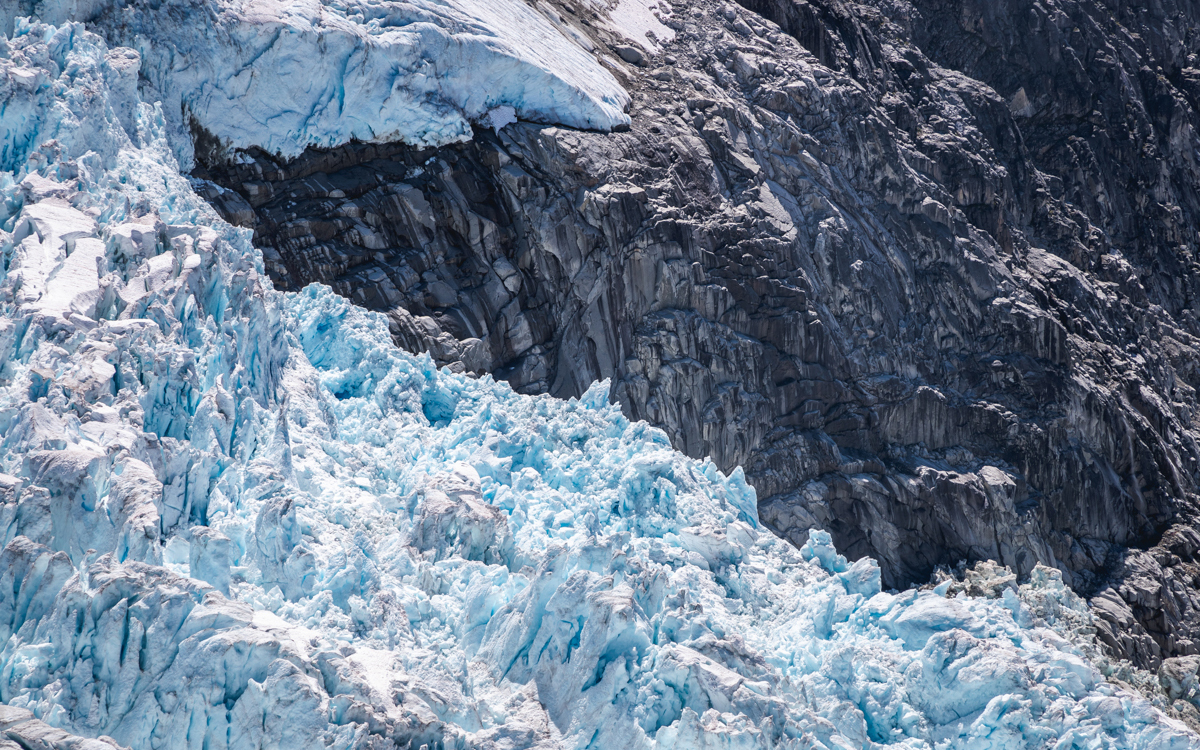
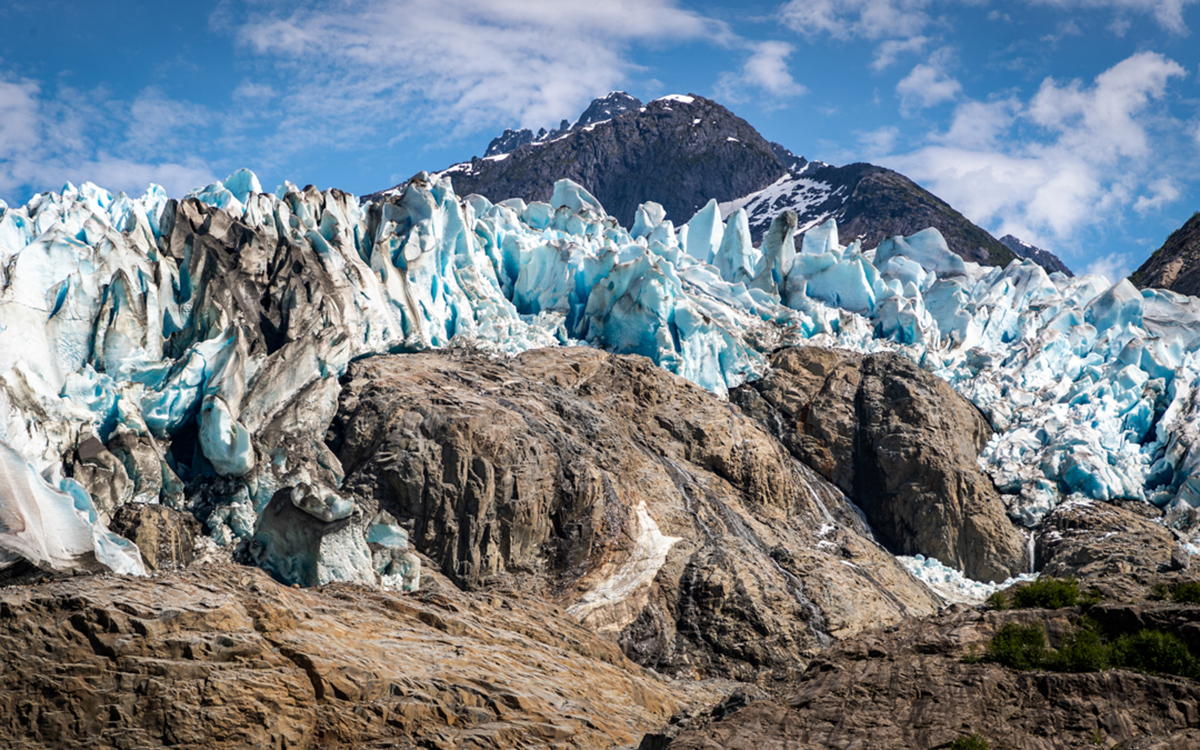
A summer on the ice doesn’t just teach the basics of glaciology and field methodologies. It’s also an opportunity to train early career scientists to be collaborative, respectful members of a team, qualities that foster a safe field environment. “The JIRP expedition is the most productive and the most rewarding for everyone when participants do their best work for the group” is the first line of the new Code of Conduct
Grisaru and Borreggine are generous with JIRP’s flaws. They applaud the progress in female representation while recognizing it’s only a start, that the ice needs to be accessible to all minority and marginalized identities. When Juneau local Deb Gregoire was program manager, she said, “My bigger push rather than worrying how many women were applying was doing outreach to Alaskans, in particular people from Juneau.” She would like JIRP to engage the Alaskan and Canadian communities it operates within, especially Native populations, and she set up two scholarships for University of Alaska Southeast students during her time with the program.
It is women like Gregoire, Boucher, Grisaru, Borreggine, and Whitney—and the countless before them—who are pushing open pathways for others.
Bertie Miller, a recent geoscience graduate from Williams College and a JIRP student in 2018, has already felt the effects of that pushing. She identifies as genderqueer and appreciated the gender-neutral housing option that Boucher vied for in 2016.
“JIRP was the first time in any scientific or outdoor community that I even saw [that identity] institutionally acknowledged, let alone respected or worked towards,” Miller said. She has never met someone in the field like her. When she thinks about her future in science, she expects to be the only one who identifies the way she does. She expects it to be lonely in that sense.
“But JIRP almost makes me want to question that, or be hopeful, because it was my first immersive experience living in a community of scientists,” she said. “Earth science is overwhelmingly white and male. Me entering as an early career scientist, as a young person, JIRP totally took me by surprise because it wasn’t anything like that.”
 The Magazine of The Sierra Club
The Magazine of The Sierra Club



